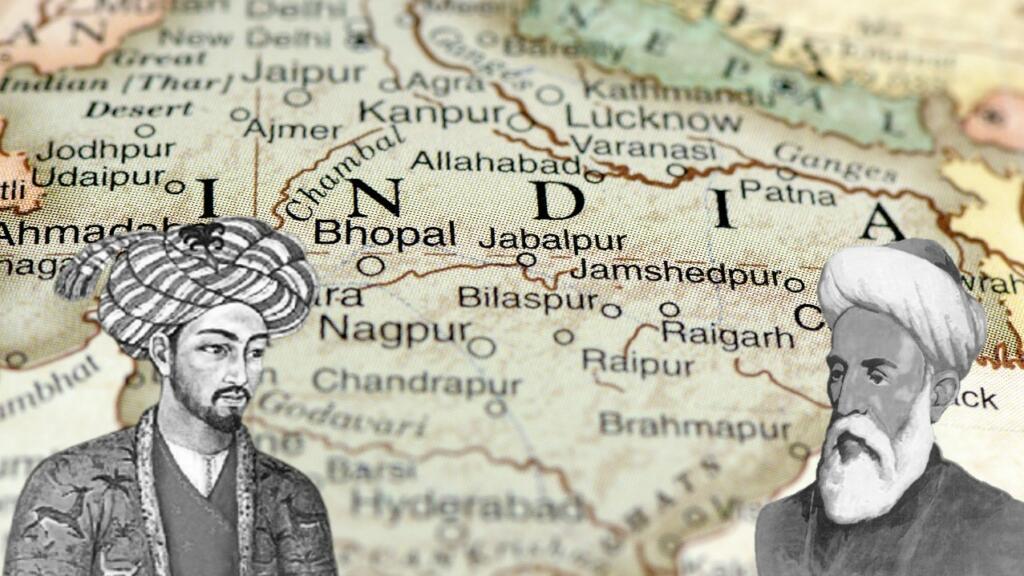Mughals invaded Bharat. The nation withstood the anarchy. English attempted to rule India. The nation made them run for their lives. But, apart from these, there were many who were aiming at dividing India by a soft means.
They were the so-called Islamic writers and poets, who, through their respective literature and art, were dividing India. The half-intellectuals like Amir Khusro and Minhaj-i-Siraj portrayed India as the land of Punjab, Haryana, and land between Ganga and Yamuna. Through such a narrative, they meant that South India was never a part of Bharat.
Little do they know that the ridiculous claims made by them will merely affect Indians who are united by their culture, ideology, and brotherhood. And the result is quite visible even after 75 years of independence. Despite the various attempts by Islamic invaders and British rule to break India by attempting to carve south India out of the Indian map, the nation has withstood every obstacle coming on its way to stay united.
Minhaj-i-Siraj and Amir Khusro’s devilish agenda
Minhaj al-Siraj Juzjani was a 13th-century Persian historian born in the region of Ghur. He was the principal historian for the Mamluk Sultanate of Delhi in northern India and wrote about the Ghurid dynasty.
In the NCERT history textbook for class 7th, it has been mentioned that Minhaj-i-Siraj used the term Hindustan for Punjab, Haryana and lands between Ganga and Yamuna. Notably, these areas are the ones controlled by Delhi Sultanate.
Amir Khusro, on the other hand, was a Sufi musician, poet, and scholar. In the 14th century, the poet Amir Khusro used the “Hindi” word for the people and culture of the Indus River only.
The book Our Pasts-II shows Amir Khusro presenting the fragmentation of Bharat into different regions and languages, also implying Sanskrit to be an elitist language with no connection to the masses of any particular region.
It is pertinent to note that Khusro’s praise of ‘Hind’ and its culture, has been deliberately omitted by NCERT. It suits the NCERT’s narrative of a fragmented polity.
What is the truth?
While these Sufi poets and Marxist historians were hell-bent on dividing India, the truth was something else. The prominence of South India can be learnt through our epics, that is, Ramayana and Mahabharat. Moreover, Manusmriti also suggests that south India played a key role in ancient India.
Ramayana is proof that North India and South India have always been together. The Adam bridge of Rameswaram in South India is connected to Ramayana and is believed to be the same bridge built by Lord Rama with the help of his Vaanar Sena to reach Lanka (and hence also called Rama Setu).
Moreover, Lepakshi is a village in the state of Andhra Pradesh. It is the same place where Jatayu from Ramayana fell after being injured in a battle with Ravana when he was escaping with Sita.
Tamil Nadu was connected with the Indus valley civilization
Tamil Nadu’s possible connection and continuity with the Indus Valley Civilisation (IVC), was also revealed in 2019. The archaeological excavations at Keezhadi, on the periphery of Madurai, had yielded artefacts dating back to 580 BCE, that are believed to have evolved from the Indus script.
The findings of excavations at Keezhadi reportedly revealed the history of South India and its connection with the Indus valley civilisation.
Thus, the scholars and politicians claiming that Tamils may have descended from the Indus Valley civilisation, as it declined, and its people moved South also seems to be true.
The findings also provide material evidence to the Sangam period of Tamil literature, considered the golden era of Tamils.
The above evidence refutes the claims made by so-called Marxist Islamic historians. And it can be believed that they wanted to divide India into two regions. However, they have failed as India stands firm as a united nation.
